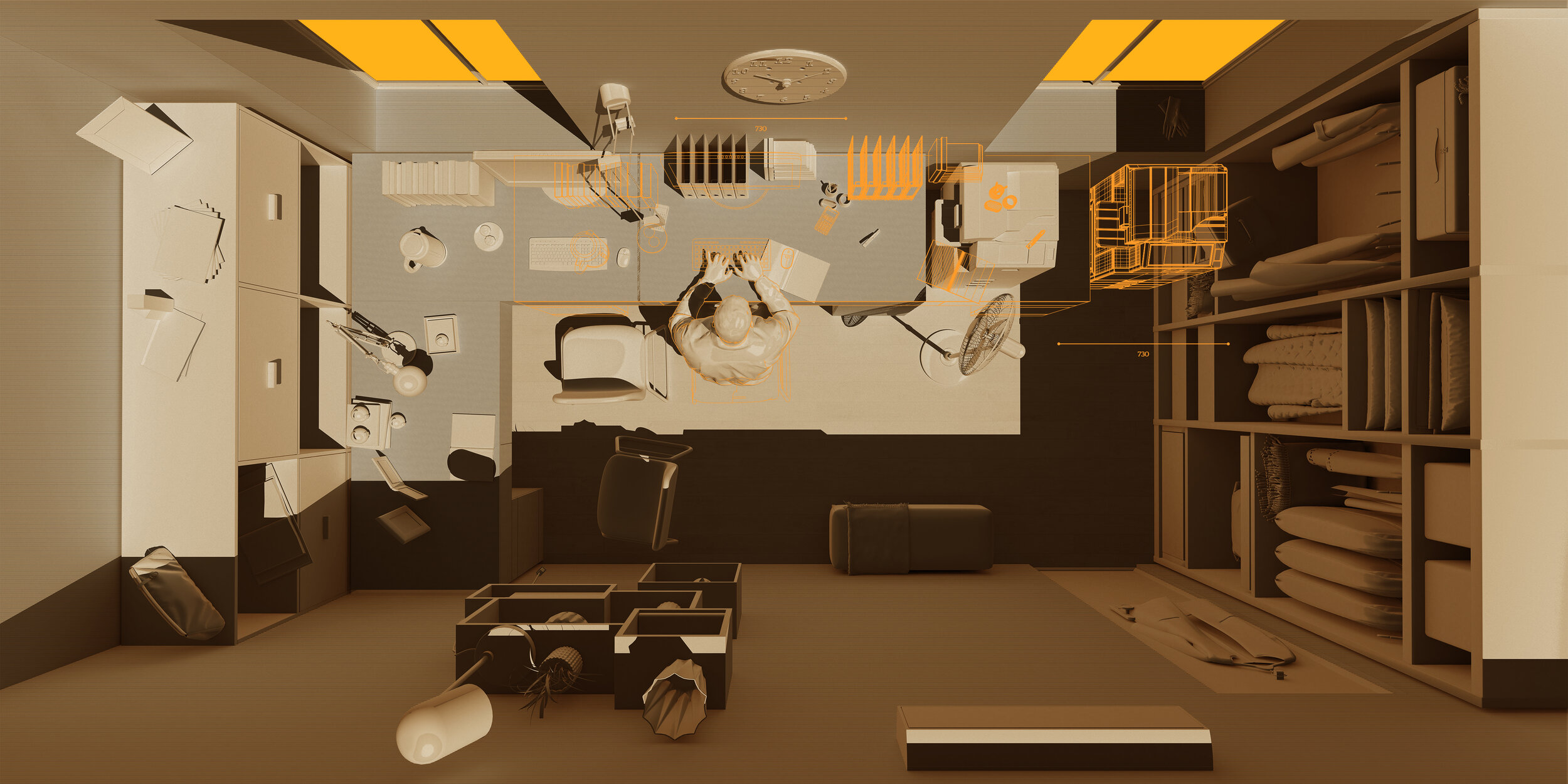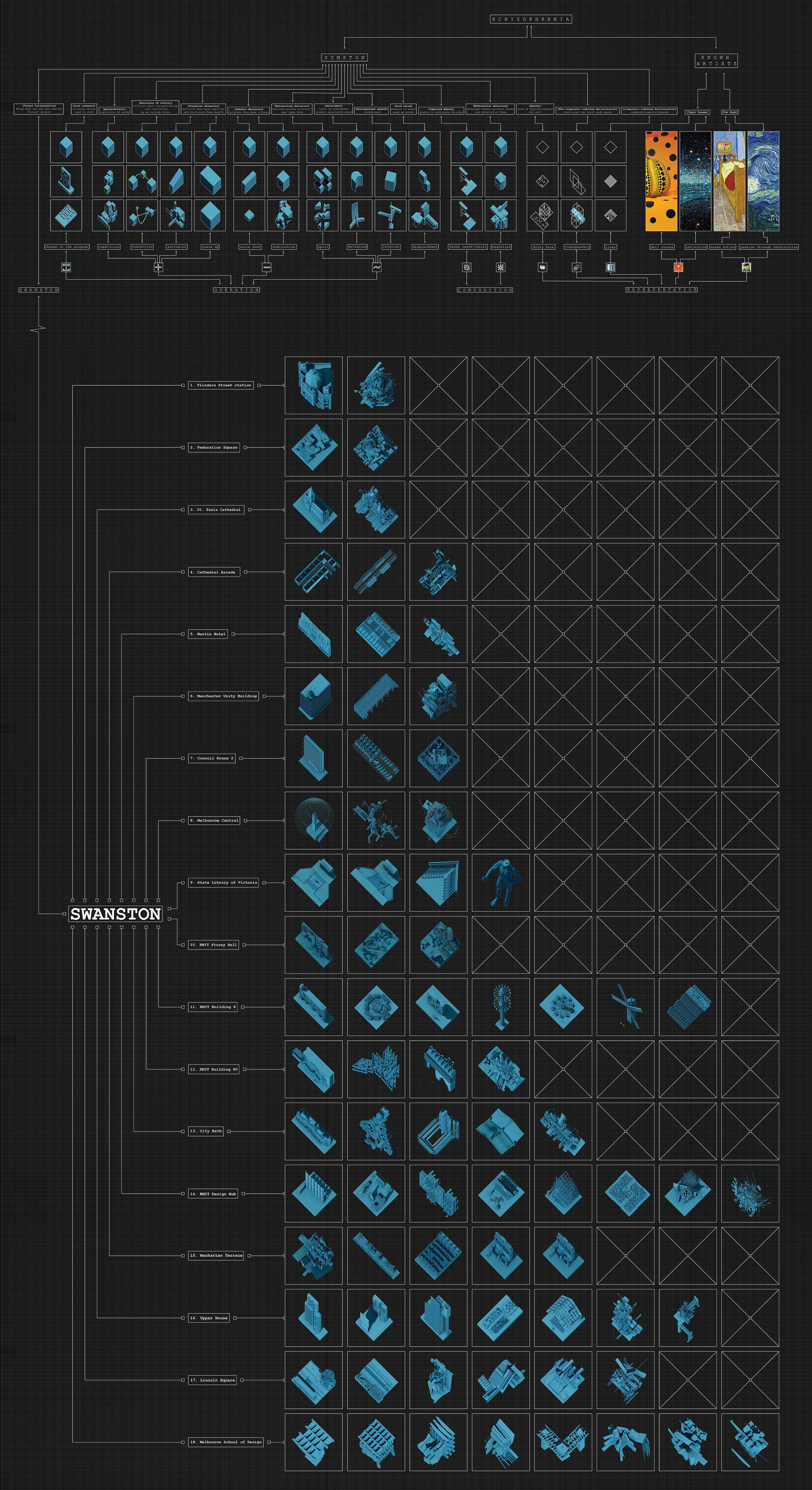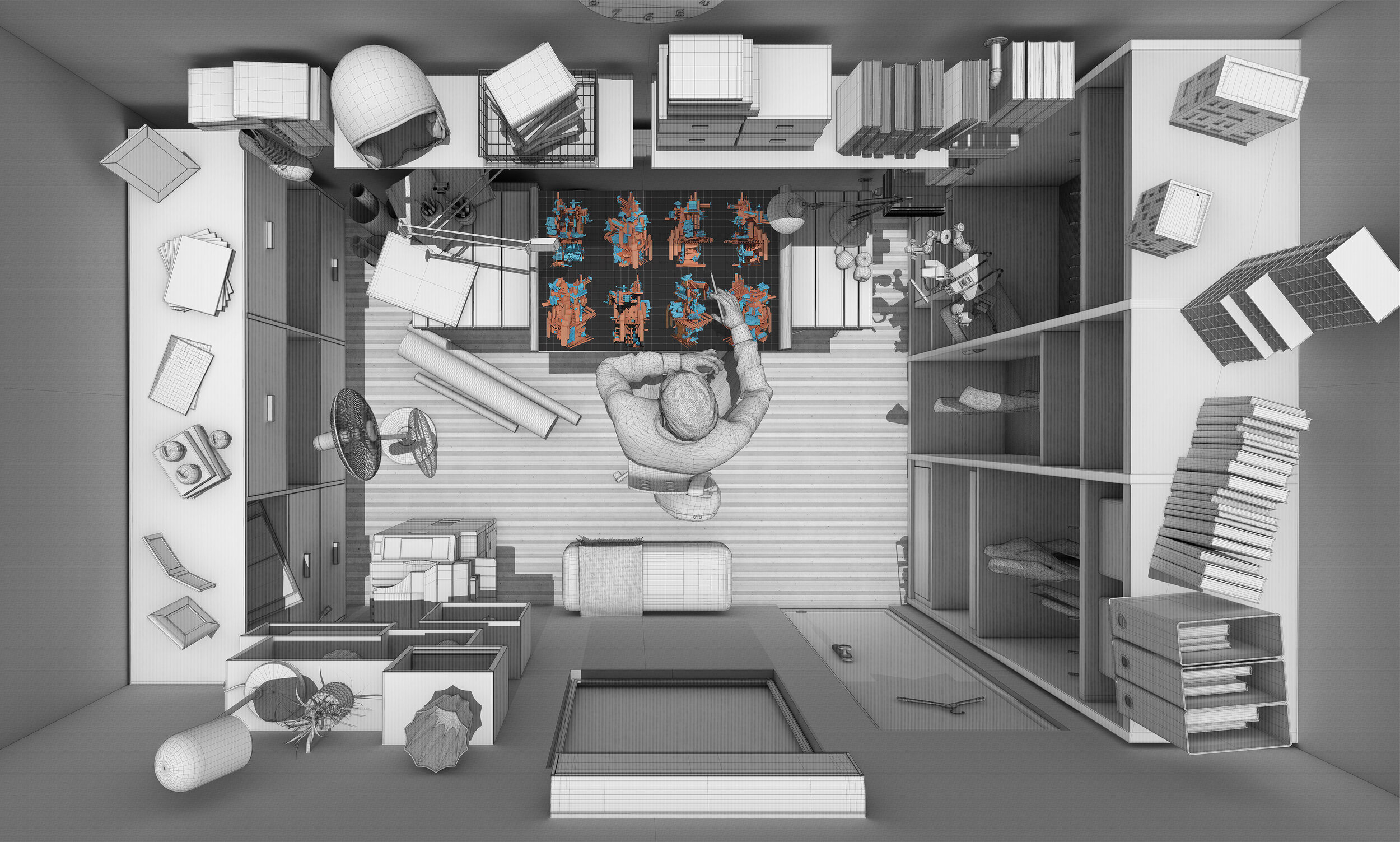Schizophrenics are the minorities in our world.
They are often depicted as ‘lunatics’, ‘serial killer’, in the film and social media. We don’t understand what they perceive and how they perceive. So we institutionalize, regulate them, cured them, to let them ‘function’, and ‘fit in’ our society, normally.
More than 30% of schizophrenics would relapse after they are being cured, and it’s mainly due to the label and stigma people always have on them. Even though they ‘function’ as normal, people still discriminate them. The nonacceptance, often comes with unemployment, thus pressure, stress and that cause relapse and it repeats.
There are 200 million people in China diagnosed with mental disorder. Though only 1.26 psychiatric doctor for 100,000 patients.
While 35% of patients are reported as normal, they still choose to stay in the hospital due to several reasons:
One most important aspect is relapse.
and that is caused mainly from:
- High pressure at work triggered disorder
- Guardian’s reluctant on supervising the behavior and regular medicine intake.
- Patients think they are cured and stopped taking medicine.
Schizophrenic patients can be categorized into 2 groups in China: treated and untreated.
Untreated patients are often homeless, they are to be sent by police to the hospital and get their guardians to take next action.
Treated patients are then categorized into 2 types: caged at home ( cannot afford a bed in hospital) or sent to treatment. The caged ones are often ended up dead after few years, some are rescued by the local doctors.
Patients are mainly divided into 4 groups inside a typical Chinese psychiatric hospital: severe male/female and light male/female depending on the respective symptoms.
Patients with severe/aggressive behaviors and disorders would share at a 3/2/1 bed (s) unit. While patients with lighter condition such as depression are required to live with others for suicide prevention. Eating, taking medicine, activities to help rehabilitate, and exercises are the daily routine.
Patients with schizophrenia are often lived by their own and sometimes cuffed, to restrain their movements so they wouldn’t ‘harm’ people. Their taking of medicine would be examined by the doctor with a porch down the throat to see if the patient really swallowed the pill. Often patients would dig out the pill from throat to prevent the upcoming dizziness and thirst.
30% of patients are likely to relapse and be sent back to hospital due to following reasons:
- Bad habit: drinking, smoking while taking medicine.
- High pressure in the outside environment make patient anxious about their capability of handling the job.
- Neglecting medicine due to lack of parenting/ guardian’s guides.
Ongoing medicine intake often result in side effects such as headache, dribbling, dizziness, thirstiness, constipation. Patients tend to believe themselves are fully healed and wanted to take off the label of having psychiatric disorder and thus stop taking medicine. The long-term medicine also makes patients suspect whether its effective and necessary. Others have issue with no money buying the medicine. The ever-ending loop of going in and out of hospital, leads to institutionalization and extreme short in beds. Thus more people needed to be treated cannot find a bed. Created the wicked problem.
The rehabilitation center designed for schizophrenics are helping them to adapt to the society, but will it, or the study of architecture space help break Schizophrenia stigma? If not, How can we use architecture language to break people’s stigma towards schizophrenics?
BBQ the books and ban the movies that depicts schizophrenia as evil? Or post slogans and articles on internet, crying ‘we are normal, please accept us?’
No.
The message isn’t strong enough, certainly not effective - when you are stating a fact and try to tell people to change. No one listens. How do we make people, from bottom of their heart, to accept and understand schizophrenics, in fact, taking their labels off, to understand them?
What if anything you perceived and felt is 730mm away from you. You believe everything is 730mm right to where they are. You tell people about it. People believe you have schizophrenia.
But does that mean what you perceive must be wrong? Is it possible, you are just perceiving things differently that you see what others can’t?
This project use architecture language as a narrative to break the stigma of schizophrenics; the dualism of the madness and civilization, and eventually to question the possibility of plural universe and reality.
This project applied the technique of Mise en abyme to narrate.
The story happens in Swanston street, Melbourne, Australia. 18 buildings from Swanston are operated and recomposed.
The symptoms of schizophrenics were studied to allocate the operation and composition of architecture language.
Gary is a student studying in Melbourne School of Design, he lives in Unilodge at the KFC, intersection of the Swanston and Grattan street.
He’s been part time working in ACMI, Federation square for 5 years.
In 2017, Gary was diagnosed in Schizophrenia.
He insists what he sees and feels that other people cannot perceive, were real.
He sees the Federation square and St Paul’s crumble, the cathedral arcade inside Nicholas building turns into a tunnel, where the new metro would run through. Manchester united building and the Westin hotel on the Collins entering a competition on its factory steel production, where the Melbourne Central Cone got into the playground slide, the Redmond Barry Statue in front of the State library becomes a tourist hot spot and look out point, where visitors could hit bowling. Underneath on Corinthian columns, he sees the space battleship takes form of city bath dome, shooting C-beams, the Upperhouse as an outdoor cinema, where people climb as high as possible to get the best spot. Troops attacking and bombing the RMIT Storey Hall, the head of heresy controlling people in the spinning top of the RMIT Building 80 umbrella.
No one believed him.
Family and friends stayed away, Gary postponed study and lost job.
He was forced into psychiatric hospital. During the stay, he takes medicine on time, sleeps on time, doing his best in the rehab program.
He got out of the hospital in a month and was diagnosed as ‘cured’. The medication forces away his hallucination, he started to see and feel things like what ‘normal’ people do.
He got back to ACMI, his boss, Glenn, was kind enough to re-hire him, but had to fire him few days after. The excessive worries and stigmas from colleagues were overwhelming.
‘Glen you want us killed?’
‘He’s alright now, but there is a chance of relapse?’
‘I wouldn’t work with a schizophrenic! It’s us or him!’
‘Sorry Gary, you have to go…’
‘Okay.’
Gary walked out the Federation Square and headed home.
Frustration.
Confusion.
Why would people want to keep away from me? I’m normal, in terms of mental stability. Sometimes I perceive the world they don’t understand, does that mean that world doesn’t exist? Why would people so easily rule out the things they don’t understand? What is reality? My so-called hallucination and delusion of the world were as real as how normal people perceive their world. Who decides the authenticity of the reality, really? Normal people are ruling the world, writing the history, and it necessarily means there is one and only reality where they perceive?
On the way from ACMI to home, he relapsed. The hallucination caught him again. Back home, he decided to draw his perception of the world down.
This is the world he experienced: where people are living and using the spaces in an unimaginable way. In this world, a character, Joe was conjured. Contrary to other people living in that world, Joe sees and perceives a different world. He tried to talk to people about the world he perceives, where buildings are experienced one by one, in a linear order. People don’t believe Joe, they outcast him because they don’t believe such banal world exists.
He lost his job.
Frustration.
Confusion.
He went back home and drew his hallucination down.
People are living and using the space in a linear and banal order in Joe’s perceived world. And there’s the protagonist of this world, Gary, suffering the discrimination from people because he perceives and sees a world that is different with other people in that world. He sees the Federation square and St Paul’s crumble, the cathedral arcade inside Nicholas building turns into a tunnel, where the new metro would run through. Manchester united building and the Westin hotel on the Collins entering a competition on its factory steel production, where the Melbourne Central Cone got into the playground slide, the Redmond Barry Statue in front of the State library becomes a tourist hot spot and look out point, where visitors could hit bowling. Underneath on Corinthian columns, he sees the space battleship takes form of city bath dome, shooting C-beams, the Upperhouse as an outdoor cinema, where people climb as high as possible to get the best spot. Troops attacking and bombing the RMIT Storey Hall, the head of heresy controlling people in the spinning top of the RMIT Building 80 umbrella.
No one believed him.
He lost his job.
Frustration.
Confusion.
Back home, he decided to draw his perception of the world down.
And it repeats.
…
…
…
What is reality?
Who decides the authenticity of the reality?
Do we only have one reality because we are the one living and perceiving it?
Is it possible our world is being drawn by a person in another world?
Is it possible, what majority of our world think is ‘real’, and ‘normal’, is another people’s hallucination?
And finally, after those questions, is it possible that schizophrenics just perceive a different world, but we can’t?
































